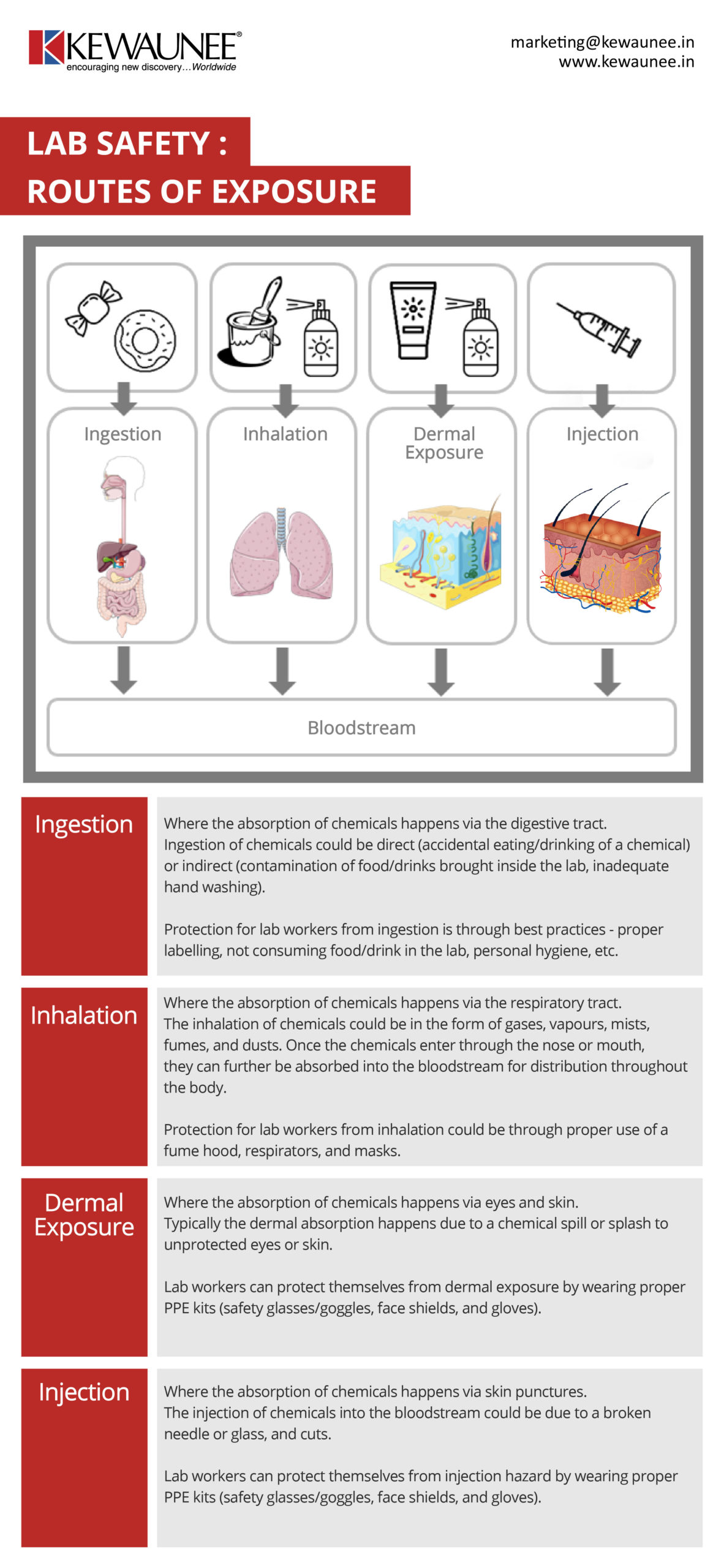Lab Safety: Routes of Exposure
In a laboratory, when the researchers are dealing with harmful chemicals, any exposure to the chemicals may cause injury or harm. An exposure route is the way that a contaminant enters an individual after contact.
The adverse health effects depend, in addition to the exposure, on factors like the property (e.g., toxicity), the amount and concentration of the chemicals, the route of exposure, duration of exposure, individual susceptibility, amongst others.
In this blog, we will look at the common routes of exposure. The four common routes of exposure are inhalation, ingestion, injection, and dermal.
| Route | Definition |
|---|---|
| Inhalation | Where the absorption of chemicals happens via the respiratory tract. The inhalation could of chemicals could be in the form of gases, vapours, mists, fumes, and dusts. Once the chemicals enter through the nose or mouth, they can further be absorbed into the bloodstream for distribution throughout the body.
Protection for lab workers from inhalation could be through proper use of a fume hood, respirators, and masks. |
| Ingestion | Where the absorption of chemicals happens via the digestive tract. Ingestion of chemicals could be direct (accidental eating/drinking of a chemical) or indirect (contamination of food/drinks brought inside the lab, inadequate hand washing).
Protection for lab workers from ingestion is through best practices – proper labelling, not consuming food/drink in the lab, personal hygiene, etc. |
| Injection | Where the absorption of chemicals happens via skin punctures. The injection of chemicals into the bloodstream could be due to a broken needle or glass, and cuts.
Lab workers can protect themselves from injection hazard by wearing proper PPE kits (safety glasses/goggles, face shields, and gloves). |
| Dermal | Where the absorption of chemicals happens via eyes and skin. Typically the dermal absorption happens due to a chemical spill or splash to unprotected eyes or skin.
Lab workers can protect themselves from dermal exposure by wearing proper PPE kits (safety glasses/goggles, face shields, and gloves). |
Comments are closed.











